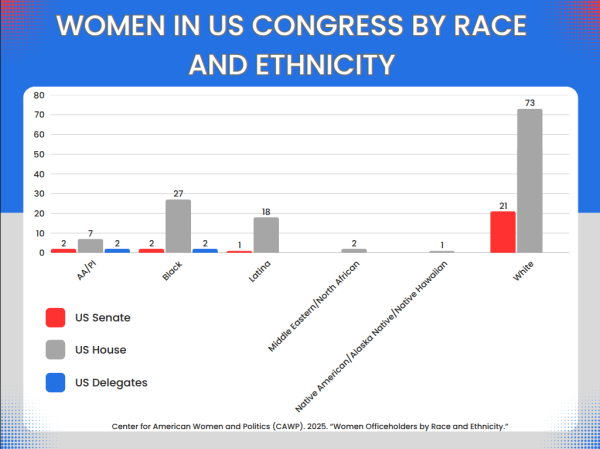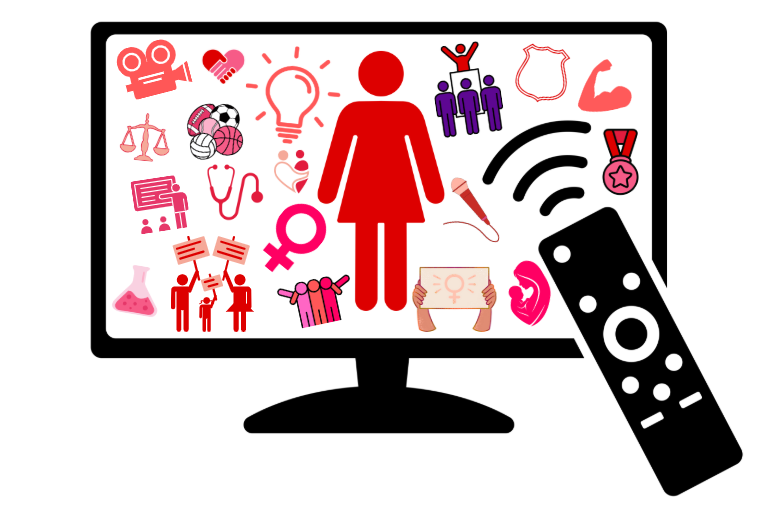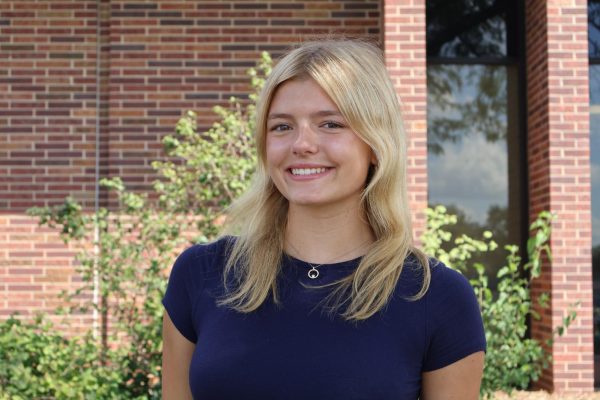Women have always been more than an archetype, like the “femme fatale” or the “damsel in distress.” However, female characters in literature, television, and digital media are consistently portrayed as one-dimensional distortions of feminine stereotypes. Thankfully, many platforms have recently begun fighting against modern misogyny in the media by depicting women in a much more positive light–as independent leaders who don’t need to rely on the male protagonist.
Constructive examples from popular television include “Wednesday,” in which many main and supporting characters are women, and “Grey’s Anatomy,” where both men and women are portrayed as worthy, intellectual leaders. Each character has different strengths and weaknesses that make them unique and more importantly: realistic. Not all women are helpless maidens and not all women are fierce and emotionless. Girlhood is a spectrum, and modern television that centers around genuine female characters and their friendships depicts this notion well.
Outside the world of entertainment, women are severely underrepresented in real-life areas such as in the news and in politics. According to the latest study done by the Global Media Monitoring Project, “women appear or are heard in just 26 percent of all broadcast, radio and print clips.” The Center for American Women and Politics claims that women make up less than half of each elective office position in all three branches of government. Women of color are represented even less.
Negative depictions and underrepresentation affect more women than just Hollywood stars and prominent political figures. President of Lincoln East’s division of Girl Up (formerly known as Feminist Club), Avery Nordhues, shared her thoughts on how accurate and respectful portrayals of women can be executed.
“Female representation, to me, is not just having a few female characters in the background of movies or having women be the minority in our political systems,” Norhues said. “But rather a real, raw, vulnerable representation of women in media, not just societal standard bodies or personalities or lifestyles.”

“For example, on Grey’s Anatomy or Scandal, you see an equal number of men and women in the same roles,” Nordhues recalled. “You also see many people of color. When we see situations like this portrayed in media, they become more accepted as the norm–and female presence in media should be the norm, I think. Women should be main characters, not just filler characters.”
However, not all depictions of women online or in media are received as empowering or nonstereotypical. Recently, American Eagle received harsh criticism for their ad campaign with Sydney Sweeney. The ad, intended to be a clever play on words and to sell their new line of jeans, featured provocative shots of the actress, along with a voiceover describing genetics and the tagline, “Sydney Sweeney has great jeans.” Reception of the promotion was mixed, with many social media users expressing their discomfort with the ad online. Critics found the wordplay problematic, as some viewed their campaign as a promotion of white and traditional beauty standards.
“These bold claims make young girls feel less than if they don’t look like a certain blueprint of a woman,” Nordhues stated. “That is, I believe, a truly toxic point of view to be pushing onto girls. Also, sexualizing women’s bodies as the media has done and the beliefs that people therefore hold about women…upon seeing that media is very harmful as well.”
English teacher and sponsor of Girl Up at Lincoln East, Francesca Rohrs, shared a similar view to Nordhues on the topic of detrimental productions. Instead of lifting women up, stereotypes tear them down to a mere expectation. Many family television sitcoms portray the father figure as, Rohrs said, “a bumbling fool” and the mother figure as the intelligent and solely capable adult. Seeing women as the caregiver in every television show does not support feminist ideas. Instead, it confines women to the roles they watch women on-screen.
“You're creating a narrative where women are going to have to do all of the domestic heavy lifting, and that's seen as the norm,” Rohrs said. “And actually, you should expect a partner who can fold laundry and knows how to go grocery shopping.”
To counter unfair representation and fabricated stereotypes, changes to the current media consumed every day must be made. Less “mean girl” clichés and more positive female friendships in movies, television, and social media has the potential to lessen the overwhelming sense of competition pushed young women and girls from an early age. Girlhood can be about uplifting fellow women instead of tearing them down out of jealousy or spite.
Social media has the highest potential to make drastic changes in how women’s stories are presented and perceived. If given a chance, one woman’s story can incite others, both men and women alike, to regard her experiences as legitimate.
“It's all about highlighting the right storytellers, right?” Rohrs stated. “So, especially if we're looking at how to correct disparity in mainstream media sources, you have to have to platform people who are telling those stories. And I think, in particular, you're going to need to platform people who are telling intersectional stories… and their own stories. Unless those people get platforms, nothing changes. And it's not like I'm telling this story because I want better female representation, I'm telling this story because it's my story that I want to tell. And it just so happens to be the story of all of these other women that is also not told.”
Through communal effort and heightened awareness to biased media, women across the globe can find themselves represented accurately and with reverence. On social media, uplifting impactful stories from female storytellers, not because they’re stories about women but because they’re stories that matter, makes a difference when giving voices to underrepresented populations. Female-centric stories, depicting women of all walks of life, deserve screen time and allow women in the spotlight to become the norm.




